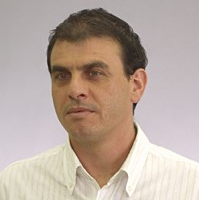Managed Aquifer Recharge—Enhancing the Use of Alternative Water Sources for Subsurface Storage and Soil Aquifer Treatment
A special issue of Water (ISSN 2073-4441). This special issue belongs to the section "Water Use and Scarcity".
Deadline for manuscript submissions: closed (31 October 2020) | Viewed by 32826
Special Issue Editors
Interests: vadose-zone and groundwater hydrology; managed aquifer recharge; interactions between agriculture and water resources
Interests: Water resources management; managed aquifer recharge; hydrochemistry; isotope hydrology; contaminants in the water cycle
Special Issue Information
Dear Colleagues,
Managed Aquifer Recharge (MAR), that takes advantage of available storage in the subsurface, is defined as the intentional infiltration of water into aquifers with the purpose of either later recovering that water for different uses (agricultural, industrial or urban), or obtaining an environmental benefit. In addition, water quality can be improved through MAR due to chemical and biological reactions during underground transport of the infiltrated water. Using alternative water sources or excess water for MAR can therefore help to increase water availability in general, and in periods of high demand. With this, MAR can be a key tool for tackling water scarcity by linking water reclamation, water reuse, and integrated water resources management in a long-term strategy. The continuous rising prices of surface storage, the decline in natural recharge and the development of new sources of residual waters turned MAR to one of the growing branches in hydrology and water resources both in research and practice.
This Special Issue welcomes manuscripts on laboratory, field and modeling studies, including exemplary case studies, related to any kind of managed recharge technique (infiltration ponds, surface spreading, unsaturated and saturated-zone injection wells, bank filtration, etc.) of any type of water (treated wastewater, storm-water runoff, urban drainage, excess desalinated water, etc.) to any sort of aquifer (alluvial, sedimentary, fractured, karstified, confined, unconfined, etc.), for any purpose (seasonal-multiyear storage, SAT, combat of sea-water intrusion, etc.). We call on hydrogeologists, engineers, bio-geo-chemists, geo-physicists, soil and water scientists and any other expert in the science and practice of MAR that have novel and relevant aspects to contribute to this Special Issue. All manuscripts will undergo a high-standard peer review process.
Dr. Daniel Kurtzman
Prof. Dr. Christoph Schueth
Guest Editors
Manuscript Submission Information
Manuscripts should be submitted online at www.mdpi.com by registering and logging in to this website. Once you are registered, click here to go to the submission form. Manuscripts can be submitted until the deadline. All submissions that pass pre-check are peer-reviewed. Accepted papers will be published continuously in the journal (as soon as accepted) and will be listed together on the special issue website. Research articles, review articles as well as short communications are invited. For planned papers, a title and short abstract (about 100 words) can be sent to the Editorial Office for announcement on this website.
Submitted manuscripts should not have been published previously, nor be under consideration for publication elsewhere (except conference proceedings papers). All manuscripts are thoroughly refereed through a single-blind peer-review process. A guide for authors and other relevant information for submission of manuscripts is available on the Instructions for Authors page. Water is an international peer-reviewed open access semimonthly journal published by MDPI.
Please visit the Instructions for Authors page before submitting a manuscript. The Article Processing Charge (APC) for publication in this open access journal is 2600 CHF (Swiss Francs). Submitted papers should be well formatted and use good English. Authors may use MDPI's English editing service prior to publication or during author revisions.
Keywords
- Managed aquifer recharge
- soil aquifer treatment
- infiltration basins
- recharge wells
- emerging contaminants
- water sensitive urban planning (in its aquifer recharge application)






